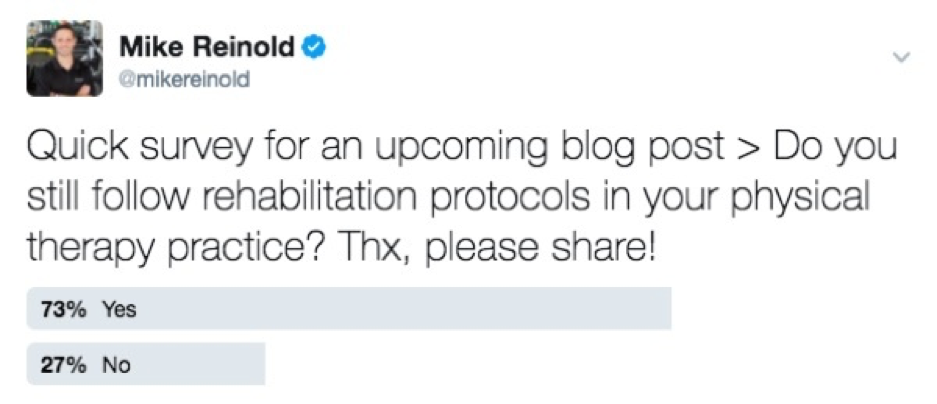Laurie's Blogs.
Feb 2020
Should you still be following rehabilitation protocols?
I found a fascinating blog post about this exact topic. It got my head spinning with things I’ve been taught as a human physio, things I’ve done in human practice, my experiences in doing canine rehab for over a quarter century, and from teaching canine rehab for 21 years now.
FYI: The blog of inspiration comes from https://mikereinold.com/physical-therapy-rehabilitation-protocols/
Let’s start with the human-side of this discussion. It was drilled into my head that the use of protocols should be shunned. Arguments for this position include any of the following:
· We need to use our brains, not follow a piece of paper
· Physical therapists shouldn’t follow a cookbook
· Physical therapy isn’t black and white
· We need individualize our treatment approach
These statements are all true! Physical Therapy is a professional practice, not simply a set of technical skills. We evaluate, diagnose, identify problems and strengths, test techniques and/or theories, set goals, and develop individualized plans to accomplish those goals. However, a protocol might help to guide your thoughts and choices based on understanding the basic science of the healing process.
The blog post mentioned above describes it as ‘making a sandwich’. You are told to use two pieces of bread, some meat, cheese, and a condiment. All of us could create a very uniquely tailored sandwich with the guidelines, but it might be very different from anyone else’s sandwich based on preferences, opinions, experience, or dietary restrictions. So, from this standpoint, you can use a rehabilitation protocol as a guideline and then take into account the unique goals of the person, the specific injury or surgery, and any concomitant injuries. No protocol is going to have an exhaustive listing of potential exercises, stretches, or therapies. No protocol will take into account speed of recovery. No protocol will take into account the individual. So, you have lots of room to play!
Now, all of that being said, postoperative protocols might be different. There might be strict time restrictions based on a particular technique used, or if bone healing needs to occur, or if soft tissues need to be maintained in a position for an extended period of time. As such, some of the post-operative surgical restrictions might be surgeon-specific, meaning that some doctors will want progress to be faster or slower based on their experience and knowledge of their technique (and the ‘insides’ of the patient). The best protocols in human medicine have been established collaboratively between the surgeon and physical therapist with respect for the knowledge that each practitioner brings to the table.
On to life in Canine Rehab!
I have created a number of protocols on FourLeg.com to help practitioners know where to start and how to think when approaching different conditions. My intention has always been for the protocols to be guidelines. To be honest, I created them because practitioners were asking for them… not because I was using them religiously. I am still very much a believer in using them as guidelines.
It’s challenging in veterinary medicine however, to have surgeon-specific protocols. Why? Mostly because the majority of surgeons are not trained in rehab and subsequently, don’t even know what they’d suggest on a protocol or how they’d break it down. Instead, they worry about the crazy dog with the overzealous owner who allows the dog to do too much too soon. Additionally, they don’t know what you know and they don’t know what they don’t know. So, from more of a basis of fear, they prescribe, “Nothing for 8 weeks!” In this day and age, and especially if there are trained rehab persons available to refer to or consult with, this is simply outdated advice.
While things aren’t going to change quickly, I do think it’s worthwhile for all of us to be approaching our local surgeons to discuss post-operative protocols. Perhaps just starting a conversation about the surgical technique(s) they use and offering to create a protocol (or two) will begin to change mindsets and practices over the long haul.
So… I want to follow on the heels of the blog post from where this thought originated. I’ve created a survey. Do you use protocols in your canine rehab practice?
Here’s the link to the survey… just to make it easier:
https://www.surveymonkey.com/r/Y87GKNY
FYI, the survey result on the human blog:

Thanks in advance for your participation! Have a great week!
Cheers, Laurie


